How to Grow Zucchini: Easy Steps for Beginners
- March 19, 2024
- 0 comment
Zucchini, with its versatile nature and prolific yields, is a favorite among home gardeners. Whether you’re a novice green thumb or a seasoned gardener looking to expand your vegetable patch, growing zucchini can be a rewarding experience. With proper care and attention, you can enjoy a bountiful harvest of this summer squash. Here’s a comprehensive guide to help you cultivate thriving zucchini plants in your garden:
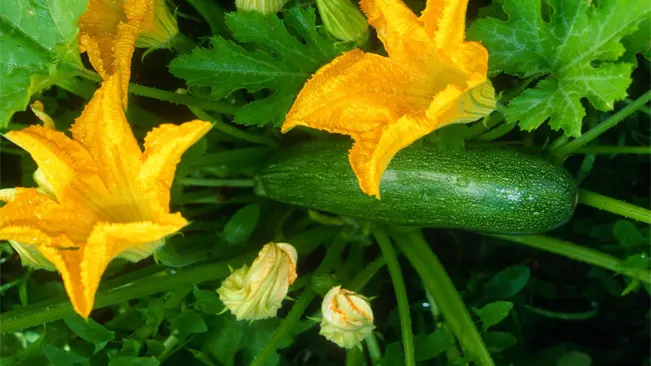
Benefits of Zucchini
| Benefits of Zucchini | Description |
|---|---|
| Low in Calories | Zucchini is a low-calorie vegetable, making it an excellent choice for weight management and calorie-conscious diets. |
| Rich in Nutrients | Zucchini is packed with essential nutrients, including vitamin C, vitamin A, potassium, folate, and dietary fiber, promoting overall health and well-being. |
| Hydration Support | With a high water content (over 90%), zucchini helps keep the body hydrated, aiding in digestion, nutrient absorption, and maintaining optimal bodily functions. |
| Antioxidant Properties | Zucchini contains antioxidants such as vitamins C and A, as well as carotenoids and flavonoids, which help combat oxidative stress and protect cells from damage. |
| Heart Health | The potassium and fiber content in zucchini supports heart health by regulating blood pressure, reducing cholesterol levels, and promoting cardiovascular function. |
| Digestive Health | Zucchini is rich in dietary fiber, promoting digestive health by regulating bowel movements, preventing constipation, and supporting a healthy gut microbiome. |
| Weight Management | With its low calorie and high fiber content, zucchini helps promote satiety, control hunger cravings, and support weight loss or weight maintenance efforts. |
| Eye Health | Zucchini contains significant amounts of vitamin A and antioxidants like lutein and zeaxanthin, which promote eye health, reduce the risk of cataracts, and support vision. |
| Skin Health | The vitamin C content in zucchini aids in collagen production, promoting skin elasticity, repair, and rejuvenation, contributing to healthy, radiant-looking skin. |
| Immune System Support | Zucchini’s vitamin C content strengthens the immune system, helping the body fight off infections, reduce inflammation, and support overall immune function. |
Selecting the Right Varieties
Selecting the right variety of zucchini is crucial for a successful and productive harvest. Here’s some additional information about common zucchini varieties and factors to consider when choosing the best one for your garden:
Black Beauty Zucchini
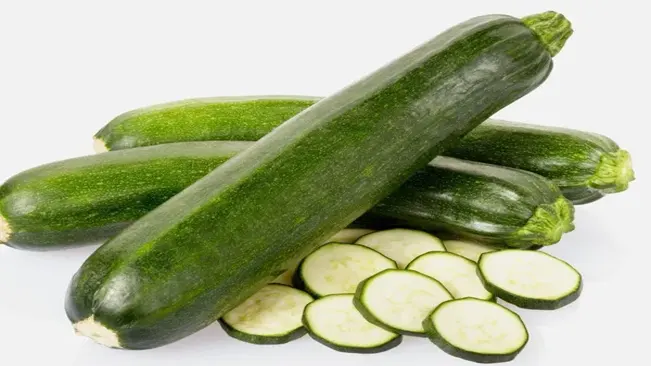
- Description: Black Beauty is one of the most popular zucchini varieties, prized for its dark green, glossy fruits with firm flesh and excellent flavor.
- Characteristics: This variety is known for its vigorous growth and high yield potential, making it suitable for both home gardens and commercial production.
- Growing Conditions: Black Beauty zucchini thrives in warm climates with plenty of sunlight and well-draining soil. It is relatively resistant to common zucchini pests and diseases.
Golden Zucchini
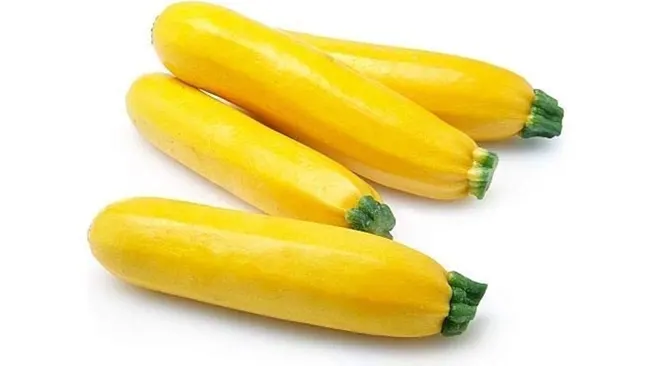
- Description: Golden zucchini, also known as yellow zucchini, produces vibrant yellow fruits that offer a slightly sweeter flavor compared to green varieties.
- Characteristics: Golden zucchini is similar in growth habit and yield to traditional green varieties but adds a pop of color to the garden and culinary dishes.
- Growing Conditions: Like other zucchini varieties, golden zucchini prefers warm temperatures and plenty of sunlight. It’s important to harvest the fruits when they’re young to maintain their tender texture and flavor.
Costata Romanesco Zucchini
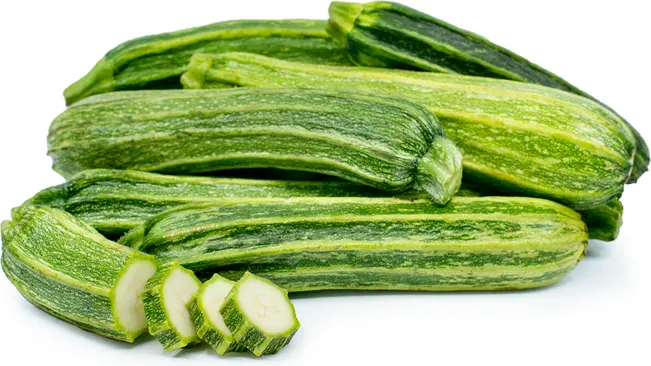
- Description: Costata Romanesco, also known as Romanesco zucchini or ribbed zucchini, features ridged, light green fruits with a nutty flavor and firm texture.
- Characteristics: This heirloom variety is prized for its unique appearance and exceptional taste. The ribbed texture of the fruits makes them ideal for slicing and grilling.
- Growing Conditions: Costata Romanesco zucchini performs best in warm climates with consistent moisture and well-draining soil. It’s important to provide support for the plants, as the heavy fruits may weigh down the vines.
Factors to Consider When Selecting Zucchini Varieties
- Space Availability: Consider the size of your garden or growing space when choosing zucchini varieties. Some varieties, such as bush-type zucchinis, are more compact and suitable for small gardens or containers, while others may require more space to sprawl.
- Climate: Zucchini is a warm-season vegetable that thrives in temperatures between 70°F and 90°F (21°C to 32°C). Choose varieties that are well-suited to your local climate and growing conditions, whether you’re dealing with hot summers, cool coastal climates, or short growing seasons.
- Personal Preference: Taste, texture, and color are subjective factors that vary among zucchini varieties. Consider your culinary preferences and intended uses for zucchini when selecting varieties. Experimenting with different colors and flavors can add excitement to your garden and meals.
Preparing the Soil
Zucchini thrives in well-draining, fertile soil. Begin by preparing the soil in early spring, ensuring it’s rich in organic matter. Amend the soil with compost or well-rotted manure to provide essential nutrients for healthy growth. Aim for a pH level between 6.0 and 7.5, which is optimal for zucchini cultivation.
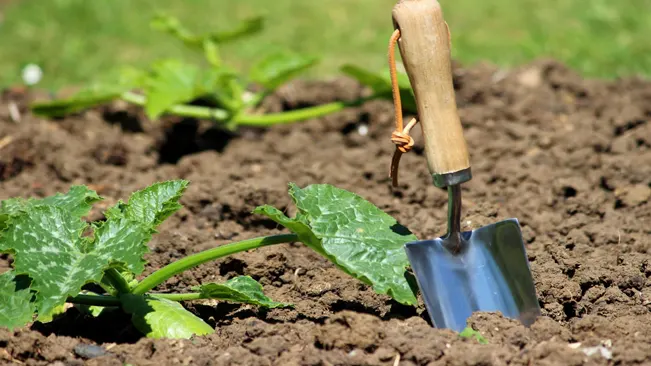
Importance of Soil Preparation
- Nutrient Availability: Zucchini plants require a range of essential nutrients to grow and produce healthy fruits. Preparing the soil ensures that these nutrients are readily available to the plants throughout the growing season.
- Water Retention and Drainage: Well-draining soil prevents waterlogging, which can lead to root rot and other water-related issues. At the same time, soil with good water retention ensures that plants have access to moisture during dry periods.
- Root Development: Loose, well-aerated soil allows for proper root development, enabling plants to access nutrients and water more effectively. This promotes healthy growth and reduces the risk of stunted or unhealthy plants.
Steps for Soil Preparation
- Clear the Area: Remove any weeds, rocks, or debris from the planting area to provide a clean space for your zucchini plants to grow.
- Loosen the Soil: Use a garden fork or tiller to loosen the soil to a depth of at least 12 inches (30 centimeters). This helps improve soil structure, aeration, and drainage.
- Incorporate Organic Matter: Add compost, well-rotted manure, or other organic materials to the soil. These amendments enrich the soil with essential nutrients, improve its texture, and increase its ability to retain moisture.
- Test Soil pH: Use a soil pH testing kit to determine the pH level of your soil. Zucchini plants prefer slightly acidic to neutral soil, with a pH range between 6.0 and 7.5. If necessary, adjust the pH using organic amendments or pH-adjusting products.
- Mix Amendments: Thoroughly mix the organic amendments into the soil to ensure even distribution. Work the amendments into the top 6 to 8 inches (15 to 20 centimeters) of soil to provide a nutrient-rich growing environment for your zucchini plants.
- Smooth the Surface: After amending the soil, smooth the surface using a rake or garden hoe to create a level planting bed. This makes it easier to plant seeds or transplant seedlings and promotes uniform growth.
Planting Zucchini
Space Requirement
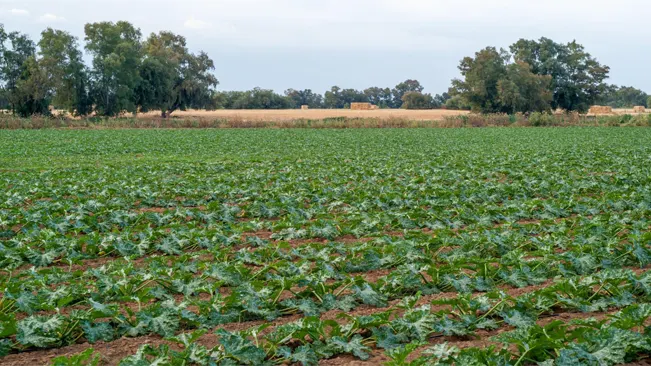
- Zucchini plants are known for their sprawling nature, so it’s essential to provide them with enough space to grow and spread out. Planting them 3 to 4 feet apart allows each plant to have adequate room for root development and foliage expansion. This spacing also facilitates good air circulation around the plants, which helps prevent diseases like powdery mildew.
Planting Method
There are two primary methods for planting zucchini: direct seeding and transplanting seedlings.
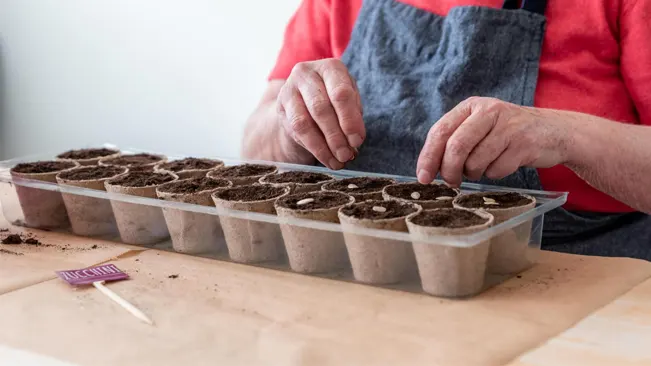
- Direct Seeding: If you choose to sow seeds directly into the soil, ensure the soil temperature has warmed to at least 60°F (15°C) to promote germination. Make small mounds or hills in the soil spaced 3 to 4 feet apart, and plant 2 to 3 seeds per mound. Plant the seeds about 1 inch deep and cover them lightly with soil. Water the seeds thoroughly after planting to ensure good soil contact and moisture for germination.
- Transplanting Seedlings: Starting zucchini seeds indoors a few weeks before the last frost date in your area allows you to get a head start on the growing season. Use biodegradable pots or seedling trays filled with seed starting mix to sow the seeds. Once the seedlings have developed a few true leaves and the danger of frost has passed, transplant them into the garden, spacing them 3 to 4 feet apart.
Soil Preparation
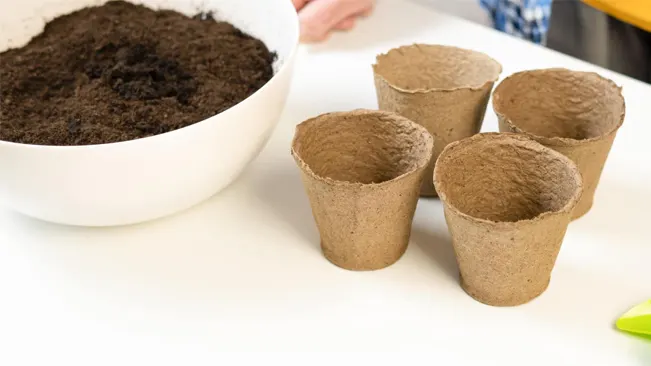
- Before planting zucchini, prepare the soil to create an optimal growing environment for the plants. Zucchini thrives in well-draining, fertile soil rich in organic matter. Work compost or well-rotted manure into the soil to improve its texture and nutrient content. Aim for a soil pH level between 6.0 and 7.5, as zucchini performs best in slightly acidic to neutral soil conditions.
Providing Adequate Sunlight and Water
Sunlight Requirements
Zucchini plants thrive in full sunlight, requiring at least 6 to 8 hours of direct sunlight daily. Adequate sunlight is crucial for several reasons:
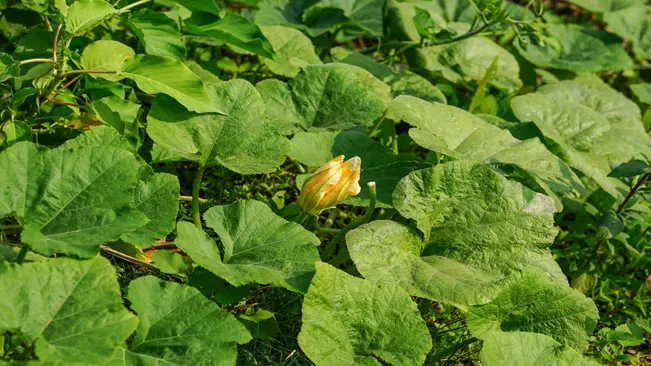
- Photosynthesis: Sunlight is essential for photosynthesis, the process by which plants convert light energy into sugars, which fuels their growth and development.
- Fruit Production: Zucchini plants require ample sunlight to produce healthy and abundant fruit. Insufficient sunlight can lead to poor fruit set and reduced yields.
- Disease Prevention: Sunlight helps dry out the foliage, reducing the risk of fungal diseases such as powdery mildew. Good air circulation and sunlight exposure also discourage disease development.
Watering Guidelines
Maintaining consistent soil moisture is vital for the health and productivity of zucchini plants. Here’s how to water zucchini effectively:
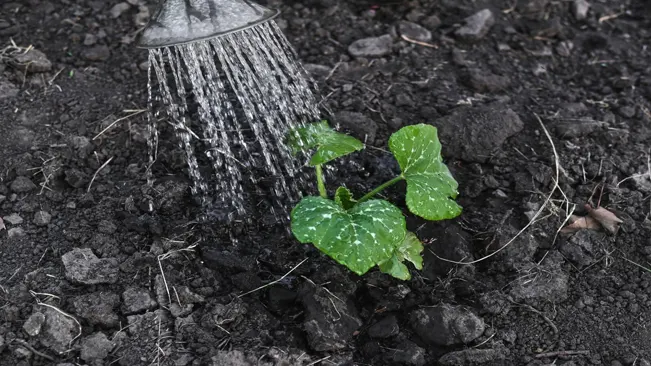
- Deep Watering: Water zucchini plants deeply to encourage deep root development. Shallow watering can lead to shallow root systems, making plants more susceptible to drought stress.
- Infrequent Watering: Water zucchini plants deeply but infrequently, allowing the soil to dry out slightly between waterings. This encourages roots to grow deeper into the soil in search of moisture, promoting plant resilience.
- Avoid Overhead Watering: Water the base of the plants rather than spraying water overhead. Overhead watering can wet the foliage excessively, increasing the risk of fungal diseases such as powdery mildew.
- Mulching: Applying a layer of organic mulch around zucchini plants helps retain soil moisture, reduce evaporation, and regulate soil temperature. Mulch also helps suppress weeds, which can compete with zucchini plants for water and nutrients.
- Consistent Moisture: Monitor soil moisture regularly and adjust your watering schedule based on environmental conditions. During hot, dry weather, zucchini plants may require more frequent watering to prevent moisture stress.
Fertilizing Regularly
Feed your zucchini plants with a balanced fertilizer or organic compost to provide essential nutrients for vigorous growth. Apply fertilizer according to the manufacturer’s instructions or incorporate compost into the soil before planting. Side-dress the plants with compost or a balanced fertilizer every few weeks during the growing season to sustain healthy growth and abundant fruiting.
Choosing Fertilizers
- When selecting a fertilizer for your zucchini plants, opt for a balanced formula with equal or near-equal proportions of nitrogen (N), phosphorus (P), and potassium (K). Alternatively, you can use organic fertilizers such as compost, fish emulsion, or seaweed extract, which provide a slow-release source of nutrients.
Application Timing
- Fertilizer application should be timed appropriately to meet the nutritional needs of zucchini plants at different growth stages. Start by incorporating compost or balanced fertilizer into the soil before planting to provide a nutrient-rich foundation for the plants.
Side-Dressing
- Side-dressing involves applying additional fertilizer or compost around the base of the zucchini plants during the growing season. This supplemental feeding helps replenish nutrients that may have been depleted from the soil and supports continuous growth and fruiting.
Mulching and Weed Control
Mulching
Mulching involves applying a layer of material, such as straw, shredded leaves, grass clippings, or compost, around the base of the zucchini plants. Mulch serves several purposes in the garden:
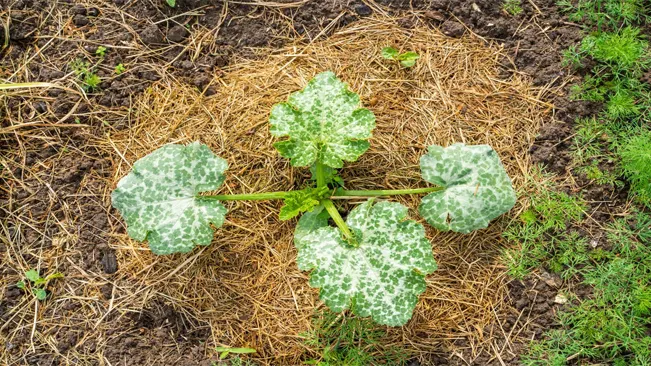
- Moisture Retention: Mulch helps to retain soil moisture by reducing evaporation from the soil surface. This is especially beneficial during hot and dry periods, ensuring that the zucchini plants have a consistent water supply.
- Weed Suppression: A layer of mulch acts as a barrier, preventing weed seeds from germinating and competing with the zucchini plants for nutrients, water, and sunlight. By suppressing weed growth, mulch reduces the need for manual weeding and minimizes soil disturbance around the plants.
- Soil Temperature Regulation: Mulch insulates the soil, helping to regulate soil temperature by keeping it cooler in hot weather and warmer in cool weather. This creates a more stable growing environment for the zucchini plants, which can improve overall plant health and productivity.
When mulching around zucchini plants, it’s important to:
- Apply a layer of mulch that is 2 to 4 inches thick, ensuring that the soil surface is adequately covered.
- Leave a small gap between the mulch and the base of the zucchini plants to prevent moisture-related diseases and pests from affecting the stems.
- Replenish the mulch as needed throughout the growing season to maintain its effectiveness and thickness.
Weed Control
Weeds compete with zucchini plants for essential resources such as water, nutrients, and sunlight. To prevent weeds from overtaking the garden and inhibiting the growth of zucchini plants, it’s important to practice regular weed control:
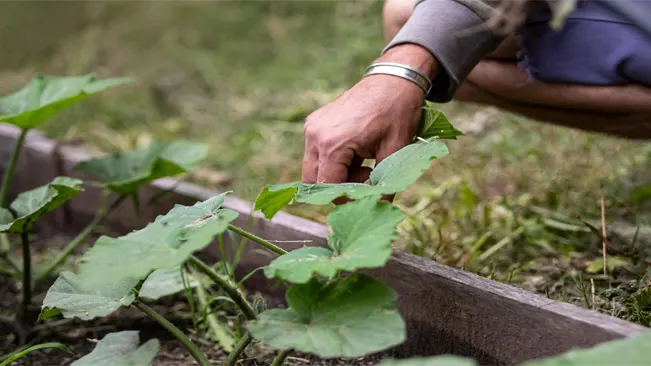
- Manual Removal: Hand-pulling weeds is an effective way to control them, especially when they are young and have not yet established deep roots. Be sure to remove the entire weed, including the roots, to prevent regrowth.
- Mulching: As mentioned earlier, mulch suppresses weed growth by blocking sunlight and preventing weed seeds from germinating. By applying a layer of mulch around the zucchini plants, you can significantly reduce the need for manual weeding.
- Cultivation: Using a hoe or hand cultivator, gently cultivate the soil around the zucchini plants to disrupt weed growth and loosen the soil surface. Be careful not to disturb the roots of the zucchini plants while cultivating.
- Pre-Emergent Herbicides: Pre-emergent herbicides can be applied to the soil to prevent weed seeds from germinating. However, it’s important to carefully read and follow the label instructions when using herbicides, as improper application can harm desirable plants and the environment.
Pollination
Zucchini plants produce both male and female flowers on the same plant and rely on pollinators like bees for fruit set. To encourage pollination, avoid using pesticides that harm beneficial insects and attract pollinators to your garden by planting companion flowers such as marigolds, cosmos, and bee balm.
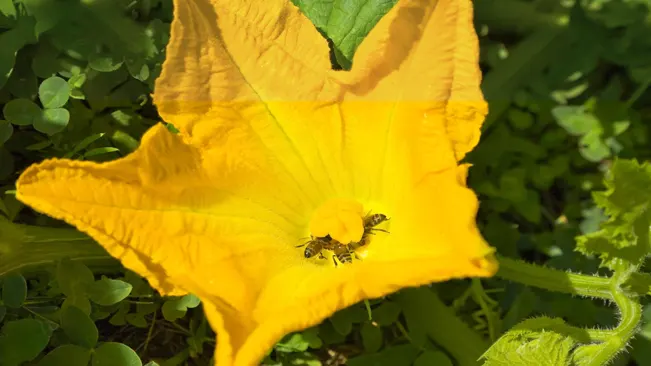
- Understanding Pollination: Zucchini plants, like many other members of the Cucurbitaceae family, have separate male and female flowers on the same plant. The male flowers produce pollen, while the female flowers contain the ovary, which develops into the fruit once pollinated. Pollination is the process by which pollen from the male flowers is transferred to the stigma of the female flowers, leading to fertilization and fruit development.
- The Role of Pollinators: Pollinators, particularly bees, play a crucial role in the pollination of zucchini plants. As they forage for nectar and pollen, bees inadvertently transfer pollen from the male flowers to the female flowers, facilitating fertilization. Other pollinators such as butterflies, moths, and hoverflies may also contribute to pollination to some extent.
- Challenges to Pollination: Despite the inherent ability of zucchini plants to produce both male and female flowers, several factors can hinder successful pollination. These may include inclement weather conditions, such as heavy rain or extreme heat, which can deter pollinators from foraging. Additionally, habitat loss, pesticide use, and the decline of bee populations can further exacerbate pollination challenges.
- Promoting Pollination in the Garden: Gardeners can take proactive measures to promote pollination and maximize fruit set in their zucchini plants. One of the most effective strategies is to create a pollinator-friendly environment by avoiding the use of chemical pesticides that may harm beneficial insects. Instead, opt for organic pest control methods that target specific pests while preserving pollinators.
- Companion Planting for Pollination: Companion planting involves strategically growing plants together to enhance each other’s growth and productivity. When it comes to pollination, planting companion flowers alongside zucchini can attract pollinators to the garden and increase the likelihood of successful pollination. Flowers such as marigolds, cosmos, bee balm, and lavender are known to attract bees and other pollinators with their vibrant colors and nectar-rich blooms.
- Creating Habitat for Pollinators: In addition to companion planting, providing habitat elements such as bee houses, nesting sites, and water sources can encourage pollinators to frequent your garden. Bees, in particular, benefit from nesting sites such as hollow reeds, wood blocks with drilled holes, or commercially available bee hotels.
- Hand Pollination as a Backup: In situations where natural pollination may be limited, gardeners can resort to hand pollination as a backup method. This involves manually transferring pollen from the male flowers to the female flowers using a small brush or cotton swab. Hand pollination can be particularly useful in greenhouses or during periods of low pollinator activity.
Pest and Disease Management
Common Pests
- Squash Bugs: Squash bugs are small, brownish-black insects that feed on the leaves, stems, and fruit of zucchini plants. They can cause wilting, yellowing, and eventual death of the plant. To control squash bugs, handpick them off the plants and destroy them. You can also use row covers to prevent infestation or apply insecticidal soap or neem oil as a natural repellent.
- Aphids: Aphids are small, soft-bodied insects that suck sap from zucchini plants, causing stunted growth, yellowing leaves, and the spread of viral diseases. To control aphids, spray plants with a strong jet of water to dislodge them, introduce natural predators like ladybugs or lacewings, or apply insecticidal soap or neem oil.
Common Diseases
- Powdery Mildew: Powdery mildew is a fungal disease that appears as white powdery spots on the leaves of zucchini plants. It thrives in warm, humid conditions and can weaken the plant and reduce fruit production. To prevent powdery mildew, maintain good air circulation by properly spacing plants, avoid overhead watering, and apply fungicidal sprays containing sulfur or potassium bicarbonate.
- Bacterial Wilt: Bacterial wilt is a serious disease caused by the bacterium Erwinia tracheiphila, transmitted by cucumber beetles. Infected zucchini plants exhibit wilting, yellowing, and eventual death. There is no cure for bacterial wilt, so prevention is key. Control cucumber beetles with row covers, rotate crops, and remove and destroy infected plants promptly to prevent the spread of the disease.
Preventive Measures
- Good Garden Hygiene: Regularly inspect zucchini plants for signs of pests and diseases, and promptly remove and dispose of affected plant parts to prevent further spread. Clean gardening tools between uses and avoid working in the garden when plants are wet to minimize the spread of pathogens.
- Companion Planting: Planting companion flowers and herbs like marigolds, nasturtiums, and basil can help repel pests and attract beneficial insects that prey on pests, reducing the need for chemical interventions.
- Crop Rotation: Rotate zucchini plants with other unrelated crops each season to disrupt pest and disease cycles and reduce the buildup of pathogens in the soil.
Harvesting Zucchini
Size Matters
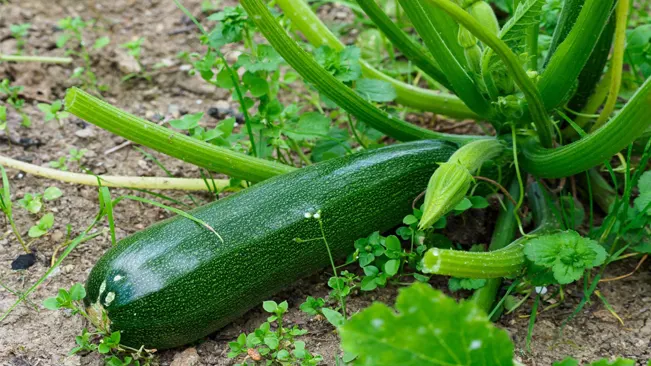
- Zucchini should ideally be harvested when they are still young and tender. The recommended size for harvesting is typically between 6 to 8 inches (15 to 20 centimeters) in length. At this stage, the zucchini will have a sweeter flavor, a tender texture, and fewer seeds compared to larger, more mature fruits.
Checking for Ripeness

- To determine if a zucchini is ready for harvest, gently press your thumbnail against the skin. If the skin is easily punctured, the zucchini is likely ripe and ready to be harvested. Additionally, the zucchini should feel firm and have a glossy appearance.
Harvesting Technique
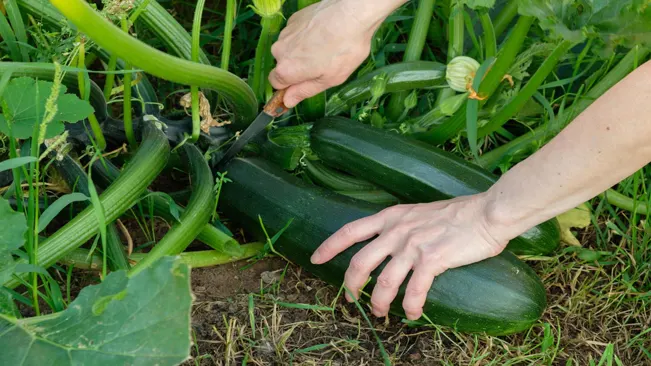
- When harvesting zucchini, it’s important to use a sharp knife or pruning shears to cut the fruit from the vine. Make a clean cut just above the stem, taking care not to damage the plant or nearby fruits. Avoid twisting or pulling the zucchini, as this can damage the plant and affect future fruit production.
Harvesting Frequency
- Regular harvesting is essential for encouraging continuous fruit production throughout the growing season. Check your zucchini plants regularly, as fruits can grow rapidly, especially in warm weather. Harvest zucchini as soon as they reach the desired size to prevent them from becoming overripe and tough.
Harvesting Tips
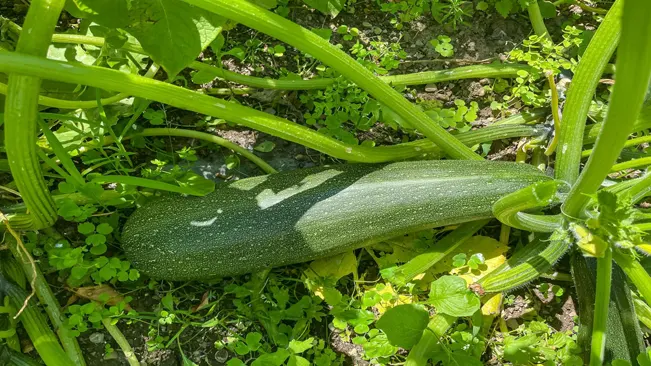
- Harvest zucchini in the morning when the temperatures are cooler to minimize moisture loss and maximize flavor.
- Handle harvested zucchini with care to avoid bruising or damaging the delicate skin.
- Remove any excess foliage around the zucchini plant to improve airflow and visibility for easier harvesting.
Storing and Using Zucchini
Storing Zucchini
After harvesting or purchasing zucchini, it’s important to store it properly to maintain its freshness and flavor. Follow these tips for storing zucchini:
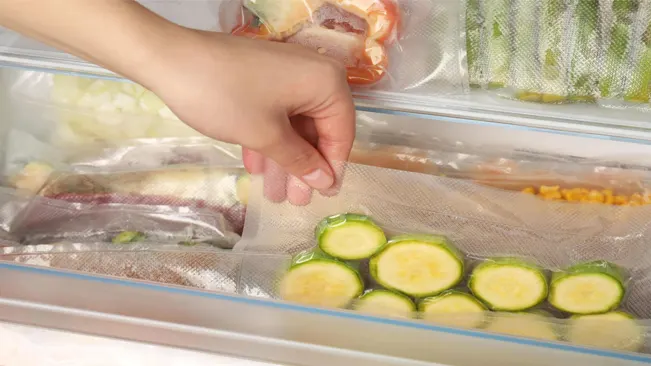
- Refrigeration: Store freshly harvested or purchased zucchini in the refrigerator to prolong its shelf life. Place the zucchini in a perforated plastic bag or a loosely closed plastic bag to allow for air circulation. Avoid washing the zucchini before storage, as excess moisture can lead to mold growth.
- Paper Towel Wrap: To absorb excess moisture and prevent the zucchini from becoming soggy, wrap it in a paper towel before placing it in the refrigerator. This helps to maintain the crispness and texture of the zucchini for a longer period.
- Proper Temperature: Keep the zucchini in the vegetable crisper drawer of the refrigerator, where the temperature is slightly cooler and more consistent. Ideally, the refrigerator should be set between 40°F (4°C) and 45°F (7°C) for optimal storage conditions.
- Check Regularly: Periodically check the stored zucchini for any signs of spoilage, such as mold, soft spots, or a slimy texture. Remove any damaged or spoiled pieces to prevent them from affecting the rest of the batch.
Using Zucchini
Zucchini is a versatile vegetable that can be used in a wide range of culinary applications. Here are some popular ways to use zucchini in cooking:
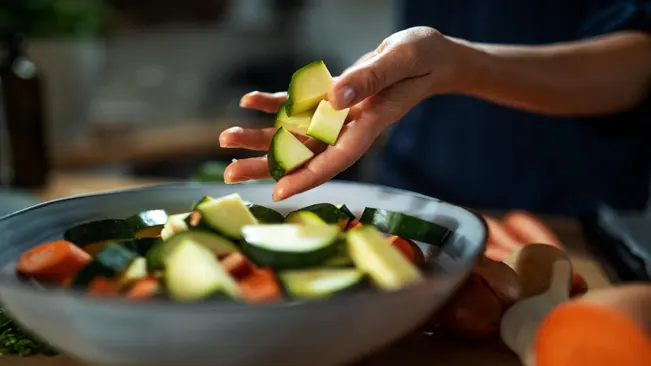
- Raw in Salads: Add thinly sliced or spiralized zucchini to fresh salads for a crunchy texture and mild flavor. Zucchini pairs well with leafy greens, tomatoes, cucumbers, and a variety of salad dressings.
- Grilled or Roasted: Slice zucchini into thick rounds or lengthwise strips, brush them with olive oil, season with salt, pepper, and herbs, and grill or roast until tender and lightly charred. Grilled or roasted zucchini makes a delicious side dish or addition to sandwiches and wraps.
- Sautéed: Heat olive oil or butter in a skillet, add sliced or diced zucchini, and sauté until golden brown and tender. Season with garlic, herbs, and spices for added flavor. Sautéed zucchini can be served as a standalone side dish or added to pasta, rice, or quinoa dishes.
- Baked Goods: Grate zucchini and incorporate it into baked goods such as bread, muffins, cakes, and cookies. Zucchini adds moisture and tenderness to baked goods while also sneaking in some extra nutrients.
- Stuffed Zucchini: Hollow out zucchini halves or whole zucchinis and fill them with a savory mixture of grains, vegetables, meats, or cheeses. Bake until the zucchini is tender and the filling is heated through for a satisfying and nutritious meal.
- Sauces and Soups: Puree cooked zucchini to make creamy sauces, soups, and dips. Zucchini adds thickness and a subtle flavor to sauces and soups without overpowering other ingredients.
- Pickled or Fermented: Preserve excess zucchini by pickling or fermenting it. Pickled zucchini makes a tangy and crunchy addition to sandwiches, salads, and cheese platters, while fermented zucchini can be enjoyed as a probiotic-rich snack or condiment.
Conclusion
By following these guidelines and giving your zucchini plants the care they need, you’ll be rewarded with a plentiful supply of this versatile summer squash. Whether enjoyed fresh from the garden or incorporated into your favorite recipes, homegrown zucchini is sure to delight your taste buds and bring joy to your gardening endeavors. Happy growing!
FAQs (Frequently Asked Questions)
- When is the best time to plant zucchini?
Zucchini should be planted after the danger of frost has passed, typically in late spring or early summer when soil temperatures consistently reach 60°F (15°C) or higher. - How much space do zucchini plants need?
Zucchini plants require ample space to spread out. Allow 3 to 4 feet (about 90 to 120 centimeters) between each plant to ensure proper airflow and room for growth. - Do zucchini plants need support?
While zucchini plants don’t typically require support structures like trellises or cages, some gardeners prefer to provide support for the heavy fruit by using stakes or tomato cages to prevent sprawling. - How often should I water my zucchini plants?
Zucchini plants require consistent soil moisture throughout the growing season. Water deeply but infrequently, aiming to keep the soil consistently moist but not waterlogged. Generally, zucchini plants need about 1 to 2 inches of water per week. - How do I prevent powdery mildew on my zucchini plants?
Powdery mildew is a common fungal disease that affects zucchini plants, especially in humid conditions. To prevent it, ensure proper spacing between plants for good air circulation, water at the base of the plant to keep foliage dry, and apply fungicides or neem oil preventatively. - Why are my zucchini plants producing only male flowers?
It’s normal for zucchini plants to produce mostly male flowers early in the growing season. Female flowers, which develop into fruit, typically appear later. If your plants continue to produce only male flowers, it could be due to stress, poor pollination, or nutrient deficiencies. - How do I hand-pollinate zucchini flowers?
If you notice poor fruit set or want to ensure successful pollination, you can hand-pollinate zucchini flowers. Simply use a small paintbrush or cotton swab to transfer pollen from the male flowers to the female flowers, gently brushing the center of each flower. - Can I grow zucchini in containers?
Yes, zucchini can be grown in containers, provided the container is large enough to accommodate the plant’s root system and offers adequate drainage. Choose a container that is at least 24 inches deep and wide and fill it with well-draining potting mix. - How do I harvest zucchini?
Zucchini should be harvested when they are young and tender, typically 6 to 8 inches (15 to 20 centimeters) in length. Use a sharp knife or pruning shears to cut the fruit from the vine, taking care not to damage the plant. - What can I do with excess zucchini from my harvest?
Excess zucchini can be enjoyed fresh, cooked, or preserved in various ways. Consider grilling, sautéing, baking, or pickling zucchini, or freeze grated zucchini for use in baked goods or soups later on.

Kristine Moore
Forestry AuthorI'm Kristine Moore, a seasoned garden landscaping professional with over 30 years of experience. My extensive career has been dedicated to transforming outdoor spaces into stunning, sustainable landscapes. With a deep understanding of horticulture, design principles, and environmental stewardship, I have become a respected figure in the field, known for creating harmonious, visually appealing, and eco-friendly gardens. My commitment to excellence and continuous learning in landscaping trends and techniques has solidified my reputation as an expert in garden design and implementation.

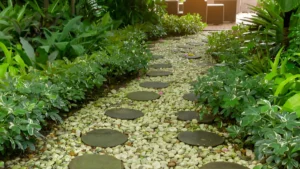










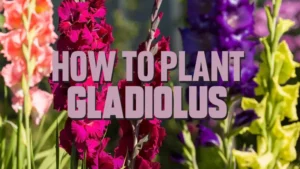
Leave your comment